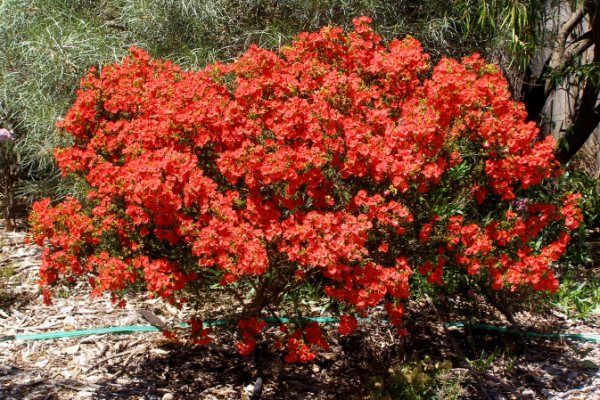General Description:
Pileanthus is a small genus of eight species, all of which occur naturally only in Western Australia. They belong to the myrtle family (Myrtaceae) and their closest relatives include Chamelaucium, Verticordia and Thryptomene.
In nature, Pileanthus rubronitidus grows on grey sand over sandstone, or white sand, in heath or Banksia sceptrum shrubland. It is a small shrub to about 1 metre high with not very clustered, linear, triquetrous (three-sided), glabrous leaves, 5-13 mm long and less than 1 mm wide. The leaves have prominent oil glands. Flowering occurs between late September and early November. The flowers are red-orange on a slender peduncle, 12-22 mm long with individual petals about 7-8 mm long and around 8 mm wide.
P.rubronitidus is not in general cultivation, but should be successful in Mediterranean-type climates of dry summers and wet winters. In suitable areas, a well drained, sunny position such as a rockery may be worth trying.
There is little information available on propagation. In common with other members of the genus, propagation from seed is likely to be difficult. Propagation from cuttings may be more successful.

Pileanthus rubronitidus
Photo: Tony Cavagnah

Pileanthus rubronitidus
Photo: Tony Cavagnah
 Australian Native Plants Society (Australia)
Australian Native Plants Society (Australia)